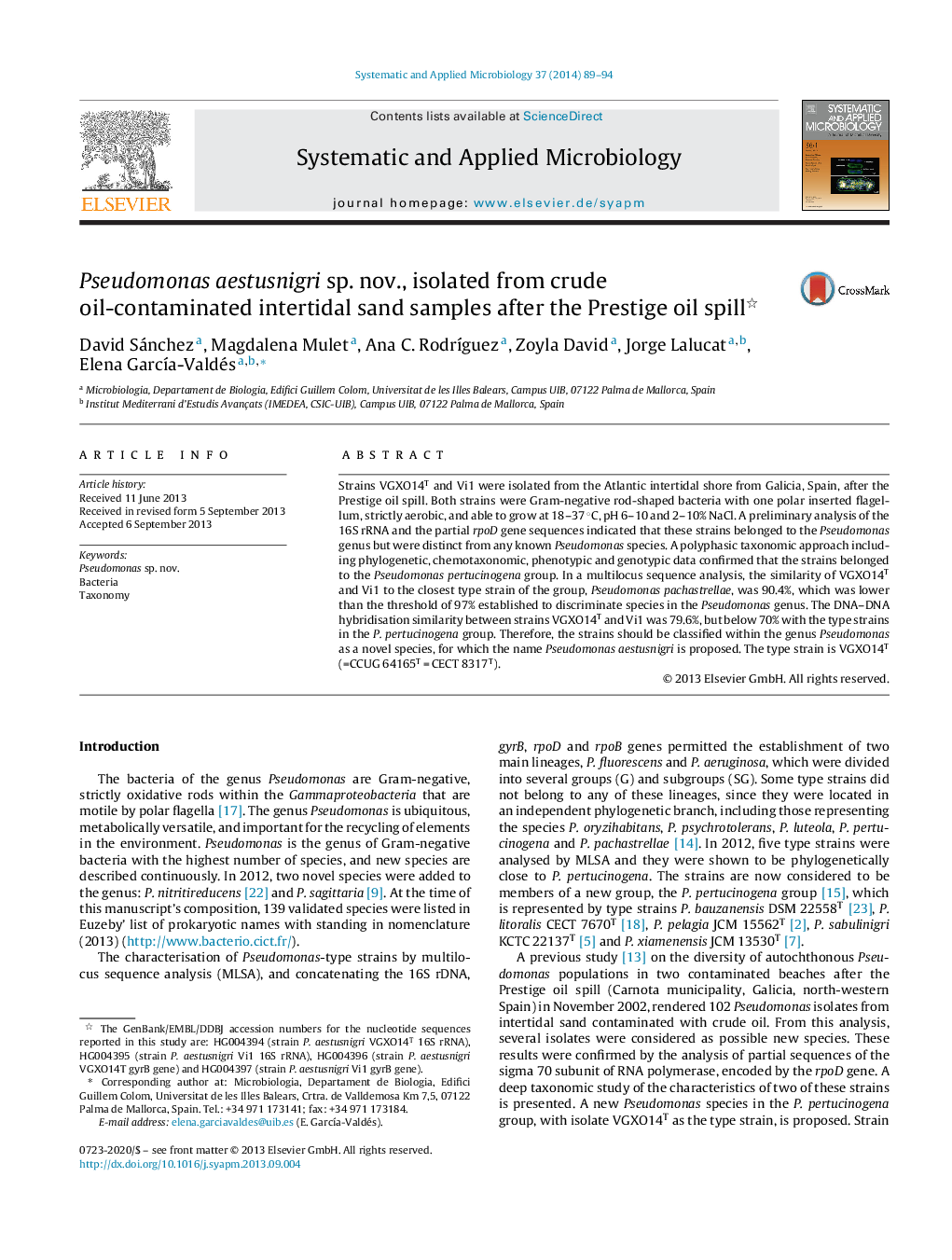| کد مقاله | کد نشریه | سال انتشار | مقاله انگلیسی | نسخه تمام متن |
|---|---|---|---|---|
| 2063110 | 1076650 | 2014 | 6 صفحه PDF | دانلود رایگان |

Strains VGXO14T and Vi1 were isolated from the Atlantic intertidal shore from Galicia, Spain, after the Prestige oil spill. Both strains were Gram-negative rod-shaped bacteria with one polar inserted flagellum, strictly aerobic, and able to grow at 18–37 °C, pH 6–10 and 2–10% NaCl. A preliminary analysis of the 16S rRNA and the partial rpoD gene sequences indicated that these strains belonged to the Pseudomonas genus but were distinct from any known Pseudomonas species. A polyphasic taxonomic approach including phylogenetic, chemotaxonomic, phenotypic and genotypic data confirmed that the strains belonged to the Pseudomonas pertucinogena group. In a multilocus sequence analysis, the similarity of VGXO14T and Vi1 to the closest type strain of the group, Pseudomonas pachastrellae, was 90.4%, which was lower than the threshold of 97% established to discriminate species in the Pseudomonas genus. The DNA–DNA hybridisation similarity between strains VGXO14T and Vi1 was 79.6%, but below 70% with the type strains in the P. pertucinogena group. Therefore, the strains should be classified within the genus Pseudomonas as a novel species, for which the name Pseudomonas aestusnigri is proposed. The type strain is VGXO14T (=CCUG 64165T = CECT 8317T).
Journal: Systematic and Applied Microbiology - Volume 37, Issue 2, March 2014, Pages 89–94